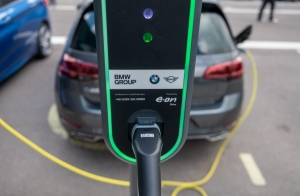Gross vs. Usable Battery Capacity: Why Your Electric Car Range May Vary
While the cost of charging up an EV is based on your local electricity rates, it also depends on how big the battery is. Or, more specifically, what kind of battery capacity your electric car has. But just like cargo space, comparing two EVs’ capacities is more complicated than it first appears. And it’s one reason why you’re not getting as much range out of your electric car as you were expecting.
An electric car battery has more than one kind of battery capacity
Although they’re not identical to ‘conventional’ batteries, electric car batteries are still batteries. That means they use the same units and terms to quantify their capabilities and level of performance. And if you want to express how much energy a battery has, you list the battery capacity, Car and Driver explains.
An EV’s battery capacity is measured in kilowatt-hours (kWh). And all other factors being equal, the electric car with the greater capacity has the greater range. That’s why, for example, a 2021 Porsche Taycan with the standard 79.2-kWh pack has an EPA-claimed 200-mile range. But if you upgrade to the 93.4-kWh pack, the claimed range increased to 225 miles, Roadshow reports.
However, those numbers aren’t the full story—and we’re not talking about the EPA range estimates. That’s because each electric car battery has two capacity figures, Car and Driver explains.
The ’79.2’ and ’93.4’ figures quoted earlier are the Porsche Taycan’s ‘gross’ or ‘total’ battery capacity figures. These numbers represent the pack’s energy content at 100% full charge. However, for reasons we’ll get into shortly, automakers don’t want owners to charge their EVs to their true 100% maximum.

Instead, the onboard hardware and software usually stop charging at around 85% full capacity, Car reports. This is what’s known as the ‘net’ or ‘usable’ battery capacity. So, the 79.2-kWh pack in the Taycan only holds up to 71 kWh in normal conditions, Car and Driver reports.
Whether gross or usable, an electric car’s battery capacity isn’t stable—and neither is its range

RELATED: Testing Electric Car Batteries Isn’t Quite Like Testing Engines
Technically, both gross and usable battery capacity are accurate ways of describing an EV’s battery pack. But they’re used inconsistently across the automotive industry. Some automakers quote only the gross battery capacity, while others provide both figures.
And to make things more confusing, Tesla doesn’t ‘lock out’ any portion of its packs, Car and Driver reports. However, while that means owners can use more of their battery, it also exacerbates an inherent problem. It’s the same issue that other automakers try to prevent by not letting owners charge their cars to 100%: degradation.
RELATED: Will EV Batteries Truly Become Affordable in 2023?
Several things can affect the lifespan and usable range of an electric car battery. Continual exposure to extreme cold and/or heat is one; repeated fast-charging is another. The former affects the chemicals and reactions the battery depends on, while the latter introduces mechanical stress, MotorTrend explains. Fast charging can also cause rapid temperature swings, which are also bad for longevity, Autocar reports. And so can repeatedly running the battery to 0% and then recharging it to its ‘true’ 100% capacity also accelerates degradation.
To be sure, all electric car batteries eventually degrade and lose range over time. But that’s why automakers quote a gross battery capacity and rely on the usable capacity, Battery University explains. It gives the pack some “grace capacity” that gets ‘sacrificed’ before the real-world range is affected. It’s like temporary hit points in Dungeons & Dragons: on a hit, your character’s temporary HP is consumed before the blow affects their ‘actual’ HP.
What does this mean for EV owners and buyers?
RELATED: Does the Ford Mustang Mach-E Have More Range Than the Tesla Model Y?
In terms of battery capacity degradation, the good news is that automakers have EV factory warranties specifically for it. Usually, that means if the capacity drops by over 30% within the allotted period, you can get the pack replaced. Car and Driver’s long-term Tesla Model 3 might be experiencing this level of degradation.
When it comes to gross vs. usable battery capacity, it’s still a capacity question. In other words, it’s not unlike asking which car has the bigger gas tank. The only difference is you might have to dig deeper into the spec sheet to find the net capacity. And it’s not impossible for two EVs with similar gross battery capacities to have different usable capacities. So, when in doubt, ask if the quoted capacity is the gross or the net number.
RELATED: How Racing Leads to Better Off-Road SUVs
Arguably just as important, though, is knowing how a specific EV behaves if you do hit ‘0 miles remaining.’ That often differs between brands, Car and Driver reports. And that might mean getting an extended test drive, rather than just comparing numbers.
Follow more updates from MotorBiscuit on our Facebook page.
The post Gross vs. Usable Battery Capacity: Why Your Electric Car Range May Vary appeared first on MotorBiscuit.






